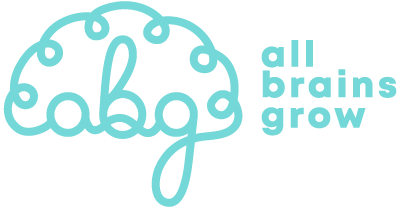There’s a stereotypical way autism looks from the outside. Poor eye contact, repetitive behaviors, or a lack of social language skills are the diagnosing features.
But autism and communication difficulties ultimately come down to the brain, not stereotypical behaviors.
This means you can shape brain development (hello, neuroplasticity!), so their brain differences serve your child.
Here’s what you need to know.
What’s Happening in the Brain
From regulating emotions to moving your legs to keeping your heart beating, your brain is always doing something. Each part of the brain has a purpose. The left hemisphere is typically dominant for language processing, so we’ll focus on it here.
The left prefrontal cortex is key to verbal communication and social behavior, including social motivation. It works in tandem with the superior temporal lobe, which is responsible for auditory processing, language comprehension, and social awareness.
In autism, it’s common for there to be altered connectivity between these two parts of the brain.
What does this actually mean?
Autistic people might struggle to talk. Sometimes, this is because the parts of their brain that move the muscles to speak don’t work like neurotypical brains. Other times, it’s because the person finds reading social cues and body language challenging.
Remember, your autistic child might understand everything you say but have communication difficulties.
Common Communication Difficulties In Autism
Common examples of these communication and language difficulties include:
- Speaking with different or very little intonation
- Being louder or quieter than everyone else
- Repeating the same thing over and over again
- Having no filter when asking personal questions
- Maintaining culturally appropriate eye contact
- Picking up on social cues when it’s time to stop or start talking
- Never participating in small talk
- Taking idioms, figures of speech, and information very literally
- Difficulty taking another person’s point of view
Your child may exhibit some, all, or none of the challenges above. Remember, there are many different ways autism looks.
Ways To Train Your Child’s Brain With Autism And Communication Difficulties
Supporting an autistic child’s communication development requires patience and understanding. Even if your child doesn’t fully realize how they communicate differently, they can feel ostracized. By maintaining a positive and supportive environment, you can help your child feel understood, reducing the risk of depression, lashing out, and worsening behavior.
✓Accept all behavior as communication so their brain expands. A scream, a push, a squeal, and a happy dance all communicate something.
✓Consistently reward whatever form of communication your child gives you by recognizing it and responding to it. This will reward those brain areas.
✓Validate your child’s emotions, acknowledge their efforts, and create a space where their forms of expression are celebrated.
✓If you’re working with a therapist, take the strategies outside your time together. Apply these teaching moments to different situations to help your child generalize their learning to various environments.
✓Use your child’s interests to teach communication. Interests are rewarding to the brain and can make learning something new feel more comfortable for your autistic child.
✓ Use role-playing to teach friendship skills and reinforce social brain areas. Make an effort to bring your child to environments where they hang out with their peers. Ideally, these spaces don’t overload your child’s senses, so look for quiet or flexible places.
See Your Child’s Social Communication Skills Thrive
An autism diagnosis doesn’t mean your child will never communicate, foster healthy relationships, or enjoy being around people. By implementing these strategies, you can train your child’s brain to improve their communication skills. This journey is not without its challenges, but it’s a path filled with hope and empowerment. In Heavenly Home, we’ll guide you through this process of shaping your child’s behavior and brain for lasting change. Learn more here.


